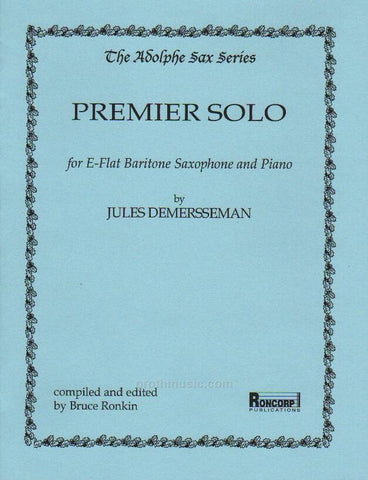An examination piece for Adolphe Sax's class at the Paris Conservatory in 1865. Jules Demersseman was born on January 9, 1833 in Hondschoote, a small town in the north of Francenow near the border of Belgium. He entered the Paris Conservatory in 1844 in the class of Jean-Louis Tulou and won a first prize in flute in 1845. Demersseman had a career as a pedagogue and soloist, often performing his own compositions. A close friend of Adolphe Sax, he wrote some of the first works ever written for the saxophone, as well as for the saxhorn and for Sax‘s valved trombone, most of which were published by Sax himself. Demersseman died in Paris on December 1, 1866 at the age of 33. The work is in the form of a Cavatina and Cabaletta, a vocal aria form used in Bel Canto operas during the life of Demersseman. In this form, a slow, expressive and ornamented melody (the cavatina), usually with solo cadenzas is followed by a faster, usually more dramatic but equally florid section (the cabaletta). Famous examples of this form include the aria Una voce poco fa in Rossini’s Il barbiere di Siviglia and Casta diva ...Ah! bello a me ritorno in Bellini‘s Norma. It is important to listen to vocal performances in this style, especially in performing the solo cadenzas, which (in spite of the notation) are not necessarily meant to be performed as virtuoso effects, but rather as a means of displaying expression and beautiful tone.
- Home
-
- Guitar/Bass
- Brass Accessories
- Cables & Adaptors
- COVID Related Products
- Digital Pianos
- General Accessories
- Guitar Accessories
- Guitar/Bass Amplifiers
- Orchestra Accessories
- Pedals
- Percussion
- Recording Equipment
- Reeds
- Sound Reinforcement
- Ukulele
- Woodwind Accessories
- Artist & Mixed Collections
- Brass Repertoire
- Broadway & Movie Collections
- Crane School of Music Books
- Easy Piano Collections
- Instrument Rental
- School Information
- Contact us
- Search
- Our Services
- Account

